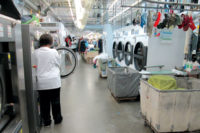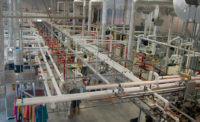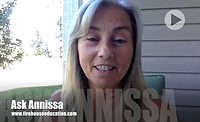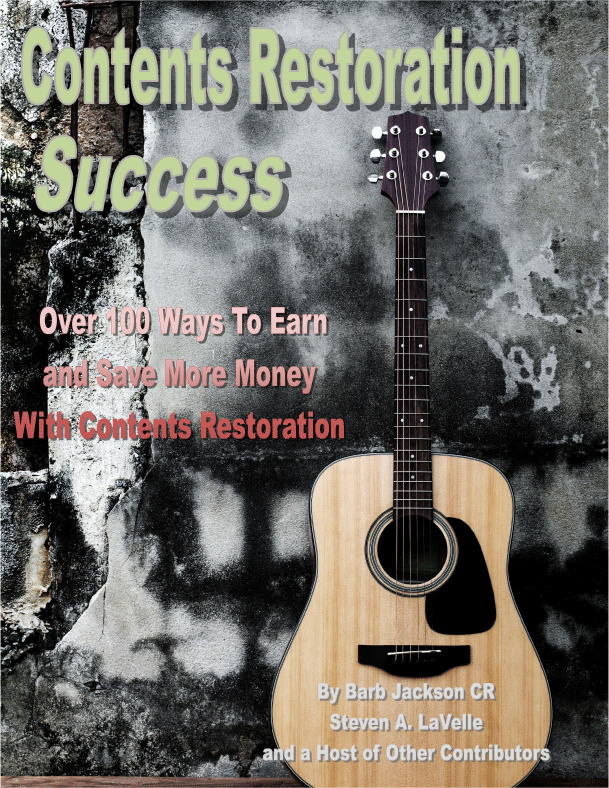Textile Restoration: Unique, Highly Specialized and a Crucial Piece of the Contents Pie
R&R visited Michigan-based OHM Garment Restoration to get a first-hand look at the textile restoration process.








It’s the beginning of winter and there’s a chill in the southeast Michigan air. But this isn’t necessarily bad news for OHM Garment Restoration - a Plymouth Township textile restoration business that serves Michigan and northern Ohio - who allowed R&R a visit and tour of its facilities in November 2013.
Marketing Your Contents Division
“Every product or service has the potential to be a portal. Be aware of the possibilities around you.”
That’s Kelli Thode, Director of Marketing, Paul Davis Restoration of Seattle, a full-service restoration firm of about 30 employees. The restoration business is a one-stop shop, a company that does it all – including contents. The company uses a full line of Fireline equipment for its hard and soft contents and also has an Esporta soft contents machine for textiles and garments.
Having an in-house contents division has helped the company get more work, as things that might be deemed unsalvageable by others have been successfully restored by the business. And while capability is a big part of the company and content division’s success, the firm has also benefited from a thorough marketing plan.
“If you’re only going to do one thing, do before-and-after photos,” Thode says. “A lot of the time, you’re taking pictures of non-restorable items, items that have already been written off. Sometimes they come out, sometimes they don’t – but you’re going to be the big winner if they do come out, not only with the customer and adjuster, but with your marketing.”
Whether it’s on your company website, blog, social media channels or elsewhere on the Internet, one click of the mouse often leads to another on the World Wide Web. Before-and-after pics are eye catching and intriguing, which is why Thode entices employees to snap such images by handing out Starbucks gift cards if they wind up in any of the company’s marketing materials.
And while the Internet is a great portal for showcasing the capability of your contents division, that’s not all you can do with photos.
“Before-and-after booklets that highlight our content division’s accomplishments have been successful in winning over adjusters and decision makers,” Thode says.
“When it’s colder, it’s busier,” says Henry Kraus, OHM owner and a 30-year veteran of the industry, over a decade of which has involved contents restoration. “When it gets cold, we get the furnaces going on, fireplaces being used, more cooking is done inside.”
And this all translates to more home fires, which inevitably leads to more claims.
But it wasn’t necessarily the garments cleaning and restoration that regularly goes down inside OHM that was a big focus of conversation upon our visit. Instead, much of the talk revolved around the importance of handling the job site aspect of things.
“What you do at the job site and how quickly you respond (to a claim) is as important as what you do here,” Kraus said. “Both are very important, but there’s a lot that can be done on the job site while you’re there and while you’re interviewing your client that will make that job go much smoother.”
For instance, communication with the homeowner. And this isn’t always easy. As Kraus points out, the loss that the homeowner is experiencing is likely a once-in-a-lifetime occurrence. Combined with frazzled emotions and having to deal with and coordinate with multiple parties (i.e., insurance adjuster, restoration contractors, contents pros, nosey neighbors, etc.), it can be an extremely overwhelming time for the homeowner. So while it can be difficult to get the answers to the questions that you need, it’s this early communication that is so crucial to the overall project.
“One of the first things I ask them is, ‘Is there anything unique going on in your household? Does anybody have any allergies?’ Things like that,” Kraus says. “If (someone does), you’ve got to know that because you can’t use the same type of detergents for everybody.
“We also want to know how to communicate with them, whether they want us to communicate with them by phone, by text, by e-mail.”
Other Marketing Means
While before-and-after photos can be used in almost any and every type of marketing material, there are other ways to get the word out about your business’ contents division. Here’s a look:
• Community events: Thode and Paul Davis Restoration of Seattle partner with Toys for Tots for a contents cleaning and also work with a local chapter of the American Red Cross. While the company does these community events at no charge, it’s good PR for the business both in terms of them giving back and raising awareness about their contents division.
• Market your equipment: Thode says they’ve gotten contents jobs solely due to the type of equipment they use. So marketing the capabilities of your equipment can pay big dividends, too.
There’s also the matter of whether or not a certain item should be cleaned, being that some clothes may be outdated and not intended to be worn again or just too far beyond feasible restoration.
After this initial consultation with the homeowner, OHM gathers emergency clothing to turnaround for the homeowner (which is typically cleaned and returned within 24-48 hours) and then proceeds to the packout step.
“The packout is a very important part of this whole process, too,” Kraus said. “When we take clothes, we take them from certain rooms. So when we return them, we want to return them to those same rooms. They’re identified when you bag the clothes. We take pictures of everything to see how rugs are laid, pictures are hung. If you don’t do those things, you’ve got a big hodgepodge of clothes – you don’t know where they’re going.”
Back at the Plymouth Township facility, the items are tagged for inventory and then they proceed to the cleaning process. (Kraus says that the typical job is about $5,000-$6,000 worth of clothes and that restoration percentages are in the high 90s.) After cleaning, clothes are stored until restoration work is completed on the home. Then, the items are returned, just as they were found.
Take a Video Tour
Inside OHM
• 1: 85-lb dry cleaning machine
• 6: Laundry machines, some of which offer 100-lb capacity
• 4: Dryers
• Others: Hand washing stations, a steam cabinet, repair work station and drape press.
Looking for a reprint of this article?
From high-res PDFs to custom plaques, order your copy today!













